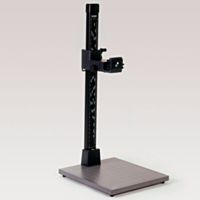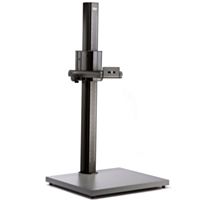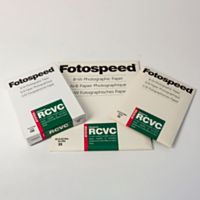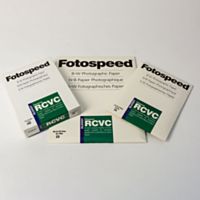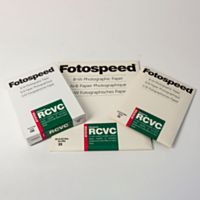Let it rain, let it rain!: creating rainy-day photographs
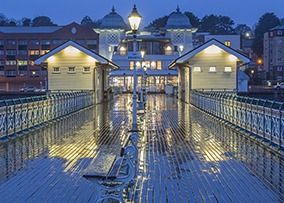
Tony Worobiec is a Fellow of the Royal Photographic Society and one of our Fotospeed photographers. He has won awards for photography both in the UK and internationally, and has authored 16 books. In this blog post, adapted from his book “Photographing Landscape Whatever the weather”, Tony explains everything you need to know about getting an incredible shot when it’s pouring with rain. For his rainy-day shots, Tony uses Fotospeed’s Platinum Baryta and Platinum Matt.
You can find out more about Tony here.
Coping with Rain.
In my last blog, I made the point that there is no such thing as "bad weather" – merely new challenges. Rain can fairly be described as one of them. It certainly takes a reasonable level of commitment to get out there and try taking photographs in the rain, but if you do you will be rewarded with some wonderful opportunities. These can be so varied, I’m often disappointed to discover that rain hasn't been forecast for the day. Seriously!
Useful Precautions.
In common with grey skies, rain has many varieties, each of which presents unique challenges. We can experience a gentle rain, right through to a full blown deluge. When considering the latter not only is it desirable to keep yourself dry, but also your camera. It is difficult to muster the enthusiasm once you’re drenched, but on a similar tack, most DSLR cameras are particularly vulnerable to heavy rain and can sustain serious damage if they are not adequately protected.
If you are inclined to try taking photographs in the rain, (and I would seriously suggest you do), then there are various (very simple) precautions you should consider. Here are just a few of them.
1.You can buy purpose-made plastic units to fit over your camera and lens; on the internet you will find numerous manufacturers offering weather-proof covers for your specific camera. Prices vary depending on the sophistication of the kit. However, it is quite easy to construct something yourself. Using something as simple as a clear polythene freezer bag, or even one of those cheap clear plastic shower caps (the sort that come free in hotels and motels) often suffice. Something as simple as an elastic band to secure the bag in place is all that is needed to finish off your homemade cover.
2. Simply use an umbrella. If you are using a tripod, then you should be able to hold an umbrella while taking your shot. Alternatively, you may consider buying a golf umbrella holder. These are designed to be attached to a golf trolley, but they can also be attached to your tripod which of course will free up both hands. If you are shooting with a friend, why not take it in turns to hold the umbrella over the other?
3. particularly within an urban setting, you are likely to find some form of shelter such as a doorway that allows you to take photographs while remaining dry. This might slightly compromise your vantage point, but if you are using a zoom lens, it is surprising what you are still able to take.
4. always make sure the lens is protected by fitting a UV filter. As these filters make very little difference to the colour of the image, they should be kept on at all times, as one way of protecting the much more valuable lens.

Suitable subjects
Itemising a list of possible themes one might seek when photographing in the rain might suggest the opportunities are limited, but nothing could be further from the reality. It should be possible to photograph most landscape situations in rain, although some of course stand out. Here are some obvious ones:
1.Wet tarmac. The urban environment can appear spectacularly more interesting when photographing in the rain; tarmac surfaces in particular become increasingly more contrasty, and quite reflective. If you can find a slightly raised vantage point, moving traffic can add further interest. Pedestrianised areas also offer rich pickings as the passing figures are usually so concerned about remaining dry that they are remain unaware of you photographing them. The reflections they create can be especially appealing.
2. Cars. Interesting shots can be taken by capturing moving vehicles and the spray they create. Clearly you don’t want to be too close to the action, which is where a long lens becomes useful. Shots such as this can be taken from an open window or possibly from an upper floor of a multi-storey car-park.
3. Boardwalks and jetties. These are often constructed of wood and can appear particularly reflective in rain. Usually constructed near water, they offer excellent photographic opportunities. Piers make ideal subjects when photographed in the rain, if only because they tend to be deserted in such circumstances.
4. More water! If you are taking photographs in the rain a rural setting, don't overlook the opportunity to photograph flowing water. Cascades and waterfalls often look their best when it is raining. First, moving water is best photographed when using a slow shutter speed (between 1/4 and 1/2 second seems to work best). With darkened skies, the amount of light is considerably limited, therefore it is quite possible to use a very slow shutter speed, even in the middle of the day. Second, as the rain dampens the surrounding landscape, the colours appear more saturated as a consequence. Dull scenarios appear vibrant and interesting as a result of the rain. Finally, if it has been raining heavily for a period of time, the amount of water flowing through the waterfall will have substantially increased, leading to a more dramatic scene.
5. Cities. Unquestionably one the best opportunities when taking photographs in the rain are illuminated urban areas at night. The wet surfaces serve as reflectors, offering interesting opportunities for abstract photography. If you find a location near a brightly illuminated building or structure, you will be amazed by how many interesting photographic opportunities you can find. Often within an urban location you are able to take your shot from some nearby shelter which overcomes some of the challenges of shooting in the rain.

The most suitable papers for your rain pictures.
I cannot disguise my love for the highly praised Fotospeed Platinum range of papers, particularly Baryta and Matt. Rain shots taken at night, particularly within an illuminated urban environment reveal a stunning colour palette, which is fabulously complimented by Platinum Baryta. I particularly value the clarity of the colours and sharp definition this excellent paper delivers. Revealing a smooth gloss finish and luxurious print quality, it really is worth spending that little extra for a good quality paper such as this. When I take images of rich neon lighting photographed on wet urban streets, this is the box of paper I immediately reach for.
Rain pictures can also appear beautifully nuanced, and this is when I opt for Platinum Matt. Aside from its remarkable archival qualities, I greatly appreciate a paper that is capable of rendering very subtle tonal variations; this is essential when printing those immensely subtle, but highly evocative, grey landscapes. Some question why I don't commit such images to monochrome, but I just love the subtle variations of grey one can achieve when shooting in rain. Platinum Matt helps me to retain those
If you would like to stay on top of all the latest information from Fotospeed don't forget to sign up to our Newsletter.


